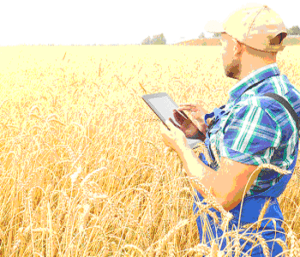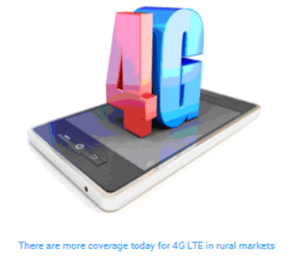What is Mobile Broadband?

Unlimited Bandwidth for Truckers, Consumers, and Businesses
Mobile broadband – the cellular data you get with your Verizon, AT&T, T-Mobile, or Sprint plan – is straightforward to use, and provides the fastest user experience of all potential rural internet services. It’s also easy and inexpensive to install mobile broadband as a fixed Wi-Fi connection.
Truckers Can Truly Experience an Unlimited 4G Bandwidth
If you are in the trucking business and drive continuously across the country and require unlimited 3g or 4G LTE wireless internet to connect your device(s) for video streaming or online gaming, you will be able to experience a truly unlimited surfing because each time you ping a new cellular tower, your data package will reset, thereby allowing you an unlimited experience.
 A high download and upload speed, combined with low latency, makes mobile broadband the fastest rural option. Today’s 4G LTE networks reach download speeds of up to 12 Mbps – 24 times faster than 3G. That’s fast enough to stream video in high definition (4 Mbps) or play a real-time online game in high definition (4 Mbps).
A high download and upload speed, combined with low latency, makes mobile broadband the fastest rural option. Today’s 4G LTE networks reach download speeds of up to 12 Mbps – 24 times faster than 3G. That’s fast enough to stream video in high definition (4 Mbps) or play a real-time online game in high definition (4 Mbps).
Check out these impressive 4G LTE stats:
- Download speed: 5-12 Mbps
- Upload speed: 2-5 Mbps
- Latency: 75-100 ms
- Monthly cost: $50-$60/10GB
- Installation cost: Less than $100
While 4G LTE is widely available in urban centers, it covers less ground in rural areas. Verizon’s 4G LTE network has the best.
coverage – 98% of Americans – followed by AT&T – 93% of Americans – followed by Sprint – 80% of Americans. There are, however, plenty of rural areas that aren’t covered by any of the three major carriers.
 Unfortunately, spotty service puts speedy 4G LTE mobile broadband out of range for many rural dwellers, but the vast majority of rural dwellers still have access to 3G, the third generation of mobile broadband. While 3G networks don’t have the same potential for speed as LTE, the capacity of the network is increasing as more customers migrate to LTE.
Unfortunately, spotty service puts speedy 4G LTE mobile broadband out of range for many rural dwellers, but the vast majority of rural dwellers still have access to 3G, the third generation of mobile broadband. While 3G networks don’t have the same potential for speed as LTE, the capacity of the network is increasing as more customers migrate to LTE.
Check out these stats for 3G:
- Download speed: 1-4 Mbps
- Upload speed: 1 Mbps
- Latency: 75-100 ms
- Monthly cost: $50-$60/10GB
- Installation cost: Less than $100
How Does It Work?
 Mobile broadband transmits radio waves through the cellular network to connect users to the internet. It can either be installed on a device (like a smartphone, tablet, hotspot, or laptop with a built-in wireless modem) or installed on an external modem that provides Wi-Fi to an entire residence.
Mobile broadband transmits radio waves through the cellular network to connect users to the internet. It can either be installed on a device (like a smartphone, tablet, hotspot, or laptop with a built-in wireless modem) or installed on an external modem that provides Wi-Fi to an entire residence.
If you’re looking for a fixed Wi-Fi connection for your rural residence or office, install your connection on a mobile broadband modem with a wireless router. If, where you are, you get equivalent coverage from two or more cellular providers, improve your connection speed by bundling plans (from Verizon and Sprint, for example) with a load-balancing router.
In the next five years, providers will begin rolling out the next generation of mobile broadband: 5G. Developers have yet to define a single aspect of the 5G standard. In general, however, they agree that 5G should support large-scale data transmission with a low-latency, high-speed connection, and cloud-based processing.
Research and development into multi-RAT interworking and fully distributed network architecture promise to deliver a more efficient network that will transport data at a reduced per-unit cost.
